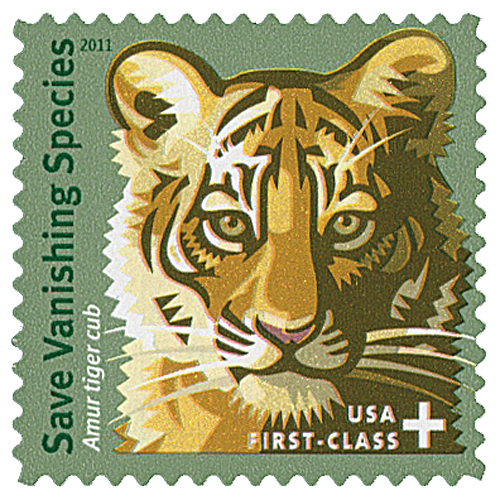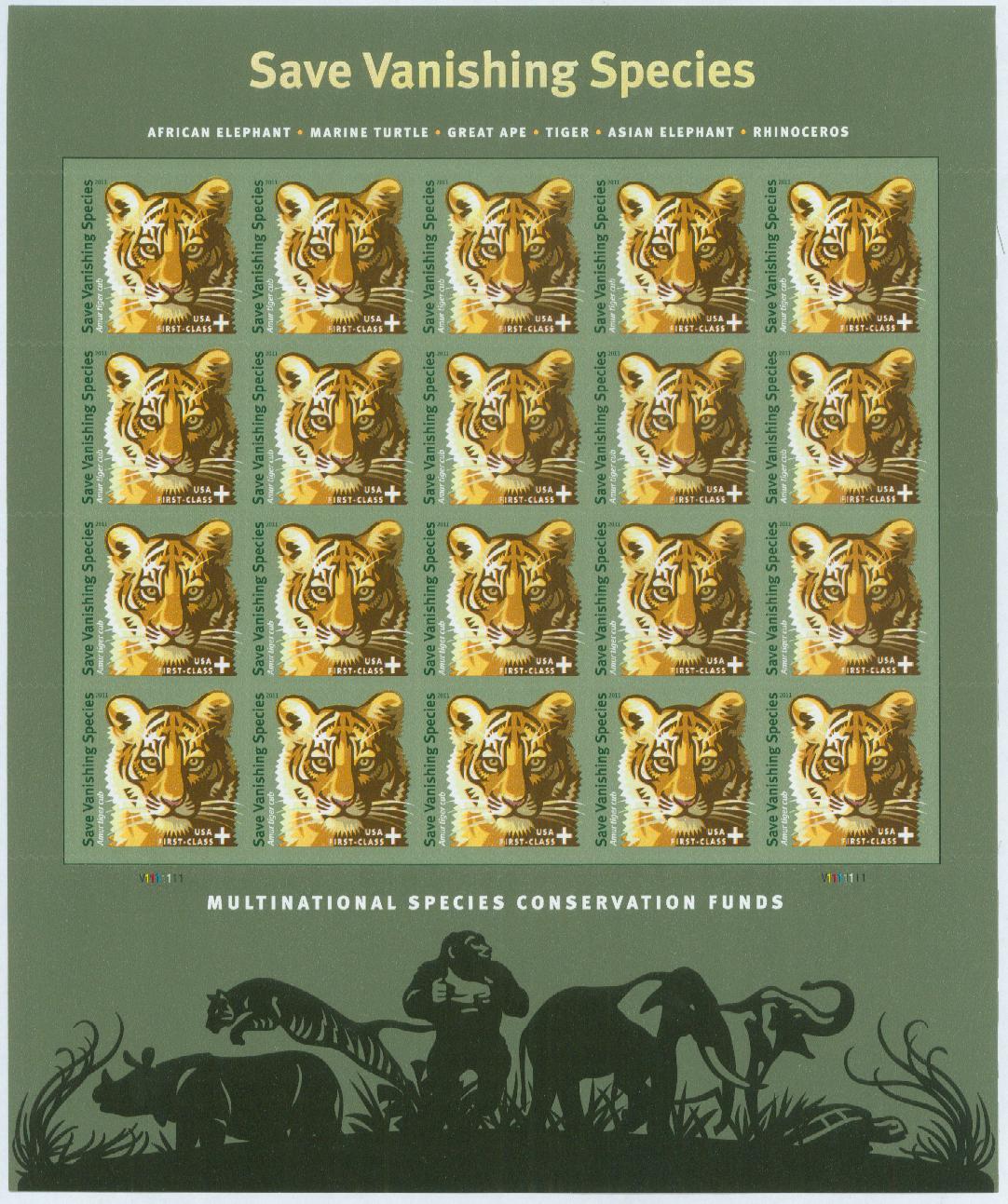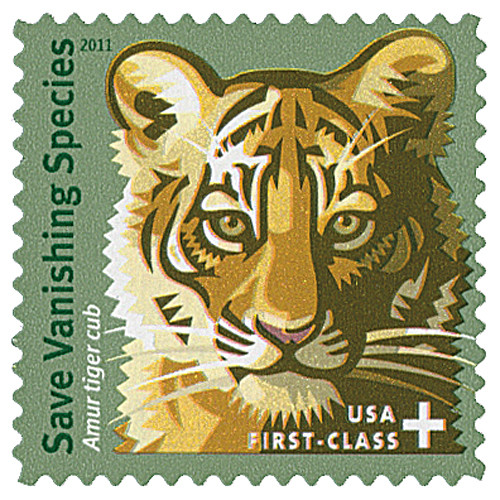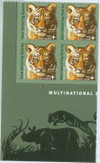
# B4 - 2011 44c & 11c Semipostal - Save Vanishing Species
Save Vanishing Species Stamp

On September 20, 2011, the USPS issued its fourth semi-postal stamp, to raise money wildlife conservation.
As early as 2000, the World Wildlife Fund and Wildlife Conservation Society proposed the USPS create a semi-postal stamp to help raise money for wildlife conservation. Their efforts paid off when Congress passed the Multinational Species Conservation Funds Semi-postal Stamp Act of 2010.
Issued on September 20, 2011, the semi-postal stamp pictures an Amur tiger. Also known as the Siberian tiger, the Amur once roamed Western and Central Asia. Their organs and bones, used in Asian medicine, and their lush pelts made them a profitable target for poachers.

During the 20th century, the Amur tiger vanished from several nations and its wild population became nearly extinct throughout the region. Today, only a few hundred are known to roam freely. The image of an Amur tiger cub was made by Nancy Stahl, the artist behind more than 20 US postage stamps. She used photographs of the species as inspiration for the stamp.

The Save Vanishing Species semi-postal stamp sold for 11¢ more than the first-class postage rate at the time. The additional funds were given to the US Fish and Wildlife Service to support worldwide conservation efforts. They, in turn, gave the funds to the Wildlife Without Borders program, which funds conservation efforts, both inside and outside the US. The program issues grants to five different multinational groups involved in protecting elephants, rhinoceros, tigers, marine turtles, and great apes. By joining conservation agencies from around the world, the United States is able to cross borders to reverse the threat of extinction to these animals.
According to a WWF representative, “This is an easy way for individuals to use their purchasing power to help save vanishing species every time they mail a letter. By purchasing these stamps, anyone can play a direct role in protecting some of our most iconic and endangered wildlife.”

The original law made the stamp available from September 2011 until December 2013. During that time, over 25 million stamps were sold, raising over $2.75 million dollars. In 2014, President Obama signed a bill reauthorizing the Save Vanishing Species stamp to continue sales through 2018. As of July 2018, the stamp has raised over $5.2 million.
Click here to read about some of the projects these stamps have funded.
Save Vanishing Species Stamp

On September 20, 2011, the USPS issued its fourth semi-postal stamp, to raise money wildlife conservation.
As early as 2000, the World Wildlife Fund and Wildlife Conservation Society proposed the USPS create a semi-postal stamp to help raise money for wildlife conservation. Their efforts paid off when Congress passed the Multinational Species Conservation Funds Semi-postal Stamp Act of 2010.
Issued on September 20, 2011, the semi-postal stamp pictures an Amur tiger. Also known as the Siberian tiger, the Amur once roamed Western and Central Asia. Their organs and bones, used in Asian medicine, and their lush pelts made them a profitable target for poachers.

During the 20th century, the Amur tiger vanished from several nations and its wild population became nearly extinct throughout the region. Today, only a few hundred are known to roam freely. The image of an Amur tiger cub was made by Nancy Stahl, the artist behind more than 20 US postage stamps. She used photographs of the species as inspiration for the stamp.

The Save Vanishing Species semi-postal stamp sold for 11¢ more than the first-class postage rate at the time. The additional funds were given to the US Fish and Wildlife Service to support worldwide conservation efforts. They, in turn, gave the funds to the Wildlife Without Borders program, which funds conservation efforts, both inside and outside the US. The program issues grants to five different multinational groups involved in protecting elephants, rhinoceros, tigers, marine turtles, and great apes. By joining conservation agencies from around the world, the United States is able to cross borders to reverse the threat of extinction to these animals.
According to a WWF representative, “This is an easy way for individuals to use their purchasing power to help save vanishing species every time they mail a letter. By purchasing these stamps, anyone can play a direct role in protecting some of our most iconic and endangered wildlife.”

The original law made the stamp available from September 2011 until December 2013. During that time, over 25 million stamps were sold, raising over $2.75 million dollars. In 2014, President Obama signed a bill reauthorizing the Save Vanishing Species stamp to continue sales through 2018. As of July 2018, the stamp has raised over $5.2 million.
Click here to read about some of the projects these stamps have funded.













